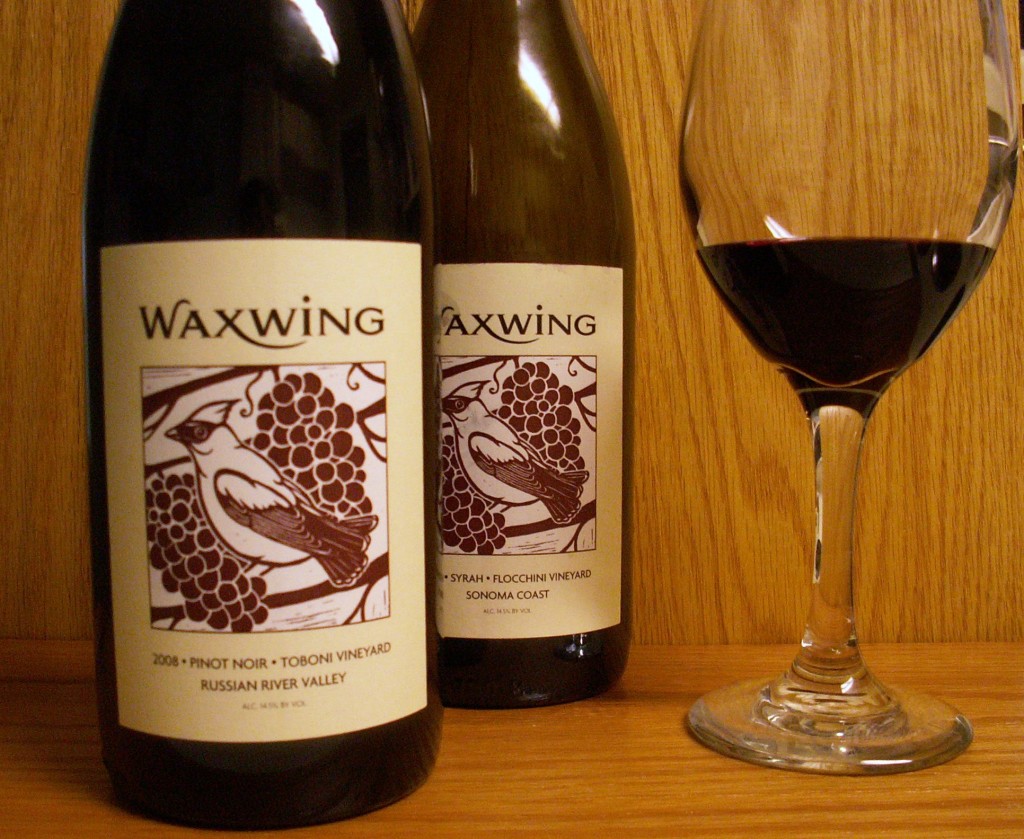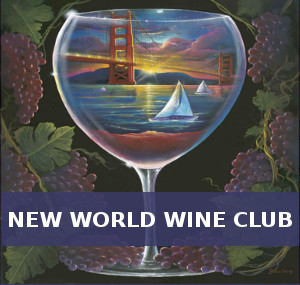Scott Sisemore isn’t your typical winemaker. In 2006, after 17 years of working in the industry for well know wineries like Ravenswood and Rosenblum Cellars, he walked away to take care of his newborn son, but he also started his own ultra-small label – Waxwing Wine. Scott’s 2008 vintage is only 80 cases, so if you’d like to taste what truly handcrafted wine is like, don’t wait too long.

To find out more about such an usually guy, we decided to give Scott the chance to share his thoughts. Here’s our interview with him:
How did you get into wine and then winemaking originally?
I completed my undergrad degree in microbiology, at Oregon State University, in 1989 and moved directly to Tahoe to be a ski bum. I was really good at that and stayed for three full years waiting tables at night and skiing during the day. I realized I was having a lot of fun pouring and helping people choose wine at the restaurant. Next I had an epiphany: my long neglected college degree was perfect for the wine industry, why not find a production job? I contacted a ski buddy, Bill Crawford, whose family owned McDowell Valley Vineyards in Mendocino County. He set me up with my first harvest job. That job was supposed to be temporary, but I worked my way up from cellar rat, to lab manager and finally plant manager in the seven years I was there.
As you’ve said, producing so few cases means the economics are against you. What factored into your decision to pursue winemaking on such a small scale?
Prior to starting Waxwing, I’d been making wine professionally in California for 15 years, with harvest stints in Chile and India. One thing I heard over and over was how relatively easy it is to make wine, but hard to sell it. I wanted to start Waxwing small to get an idea if I have any talent for selling wine. Also as a full time stay-at-home dad, I already had my hands full. With little to no time for sales trips, I wanted to make sure I could sell through each vintage locally.
Was it difficult to leave your commercial job?
No, it wasn’t difficult. After spending so much time making wine for other people I was totally ready and eager to jump in and start implementing my own ideas with regards to wine making and marketing.
Why did you select Russian River Valley Pinot Noir? What sets it apart from other regions for you?
I don’t necessarily prefer Russian River Pinot. I think California has lots of spots up and down the coast for growing great Pinot Noir grapes: the Anderson Valley, Sonoma Coast, Santa Cruz Mountain, Santa Lucia Highlands, Santa Rita Hills. What I like about the Russian River Valley is that the Pinot Noir we make has great weight (seldom thin), superb fruit flavors and wonderful balance.
With Waxwing, I am not going to follow the trend set by other small Pinot producers to have many vineyard sources scattered all over the state. I want to focus on one vineyard for Pinot and one for Syrah. I intend to grow with these terrific vineyard sources.
Do you foresee expanding Waxwing’s production to be more viable, or is it more of a bridge back to commercial winemaking?
I want to grow Waxwing slowly (for now) and when our two boys are in school, I’d like to ramp-up production for a viable business. I think that might be somewhere between one thousand to three thousand cases per year. Since I like doing all facets of the process, I don’t want to get too big. I want to do all the cellar work, bottling, marketing and sales by myself. I’d be happy tending 40 to 100 barrels a year.
Of course, my dream is to own a small Pinot Noir vineyard someday and do most of that work myself, too.
What’s your favorite drink other than wine?
I’m from southern Oregon and have always absolutely loved beer. For the past five years I’ve been excited by lager-style beers, especially pilsners, made here in the US.
Favorite wines from the past year?
Last spring I stumbled across a collection of high end Napa Cabernets from the late 80s/early 90s at a local garage sale. They were in pretty good shape so I bought them for $5 each! The 94 Insignia and 92 Opus One wines were both fantastic. Recently, I’ve also had the chance to try two Trefethen Cabs from that era. I’m slowly realizing how tasty, restrained and gorgeous these wines were before vintners started pushing the ripeness out further and further.
With Waxwing I want focused, balanced and delicious wines. I achieve this by finding grapes with lower sugars/higher acid levels and by using less new oak in the cellar.
Waxwing 2008 Flocchini Vineyard Syrah / Sonoma Coast
A nose of plum, cherry, smoked meat, white pepper, and herbs entices you to a first sip. Vivid flavors pack the palate, as cherry, plum, and cranberry flow into notes of roast meat, herbs, and pepper. Not overly fruity or gamy and with plenty of acid to keep the wine bright, it’s very approachable for $25.
FBWorld Panel Score: 90
Waxwing 2008 Toboni Vineyard Pinot Noir / Russian River Valley
The wine has a rich, layered nose of cherry, plum, strawberry that blend with notes of cola, clove, and bacon. With a sip, lively flavors of cherry, cranberry, and strawberry unfold into hints of herbs and spices. An elegant wine, with nice bright acidity and enough body to develop nicely, it’s a good value at $30.
FBWorld Panel Score: 92












